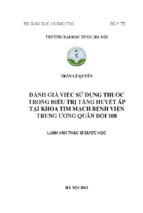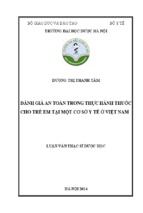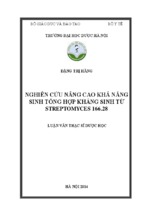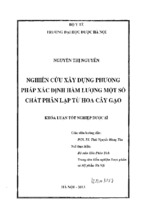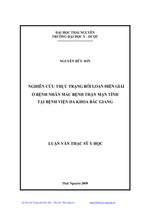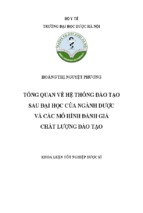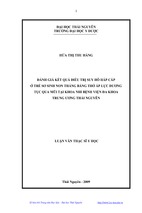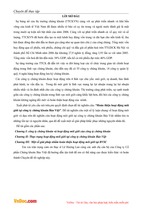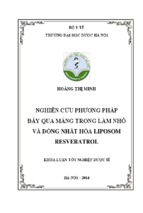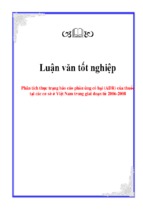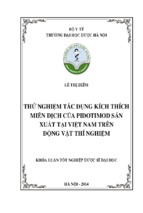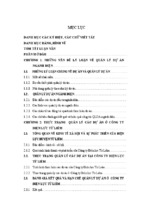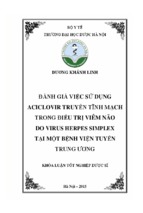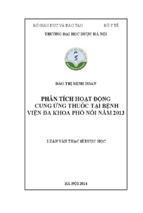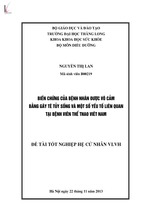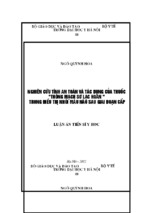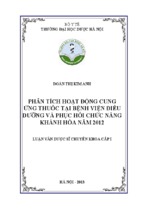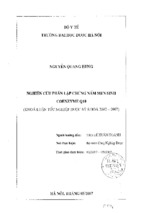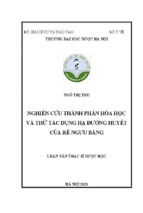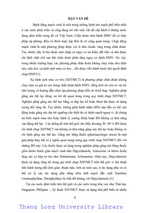IS-VNU( INTERNATIONAL SCHOOL- VIETNAM NATIONAL UNIVERSITY)
How ethics and gender
affect mixed genders of
students in an
accounting universities?
Comparing two different accounting faculties
in two different universities in Ha Noi
MR. Nguyen Toan Duc
2010
IS-VNU(
INTERNATIONAL
SCHOOL- VIETNAM NATIONAL UNIVERSITY)
“How ethics and gender affect
mixed genders of students in
accounting universities?”
(Comparing two different accounting faculties in two
different universities in Ha Noi)
Author: Mr.Nguyen Toan Duc
Thesis for Degree of Bachelor of
Business
2
Abstract
Title: “How important is an employee structure with mixed genders of student in
accounting and auditing universities?”- Comparing two different accounting and auditing
departments in two different universities in Ha Noi.
Level: Thesis for Degree of Bachelor of Business
Author: Nguyen Toan Duc
Supervisor: Doctor Le Van Lien
Date: 1th June 2010
Purpose: The purpose of this study is to investigate the importance of having an employee
structure with mixed genders in an accounting university.
This study answers the following questions:
• How important is an employee structure with mixed genders in an accounting university?
• What are the differences in the employee structure of accounting faculties in NEU (National
Economics Universities) and AOF (Academy of Finance)
The roles of the genders in a global economy are becoming more and more important in
today‘s society. This is why I have studied this subject for my Bachelor thesis and I think it
can be interesting, and useful for the universities, companies and education today to become
more aware of the importance of mixed gender‘s.
3
Method: To be able to complete my study I have collected data from questionnaires and
interviews in the relevant universities and I have also looked for information in books,
journals, and on the Internet. After gathering the information I analyzed it according to the
theories, which are presented in the theory chapter.
Result & Conclusion: The important role of mixed genders is to be able to evaluate the
future trends of selecting future career of students in economic universities of Vietnam
Suggestions/ future studies: For future studies it would be interesting if more accounting
universities from a greater selection of Vietnam could be compared. This comparison would
be interesting if it was between a university with similar educating field or even with the
extreme opposites
The studies contribution: My study and the suggested future studies can be used to improve
the working condition and business outcome for company‘s which do not already have a
quota procedure for genders.
Keywords: Mixed genders, accounting company, gender quota, leader position.
4
Acknowledgement
This study has been undertaken for the Accounting and Auditing faculties of NEU(
National Economics university) and AOF( Academy of Finance) in Ha Noi, Vietnam.
Mixed genders has been a well discussed and studied subject since women wanted to
start independent works than stay at home to play role as housewives. Since then it has also
been discussed how the efficiency and effectiveness in a company relates to mixed genders.
But up until today it is still common that women work in special segments of economy and
also not within high positions. This is an issue that many companies now try to pay attention
to improve this situation. The equality of genders at working places is an interesting, useful
and important question and that‘s why I have studied how Vietnamese economic universities
support their students in dealing with this issue in their current and future circumstances. I
have chosen these universities to be able to compare two different Vietnamese universities
that early develop accounting education which follow modern programmes of developed
countries( eg: England, Armerica, Japan, or Australia)
Firstly I want to thank my supervisor Dr. Le Van Lien who has been guiding me
through this study.
I furthermore want to thank everyone that participated in answering the questionnaire.
I hope that this study can be used for future studies and can help students or people
who want to have an employment in an English cultured company.
Ha Noi, 1th May 2010
Nguyen Toan Duc
5
Content
1. Introduction..........................................................................................................................9
1.1 Background ......................................................................................................................9
1.2 Purpose and Limitations .................................................................................................11
1.3 Time Plan........................................................................................................................11
2. Literature review................................................................................................................13
2.1 Defining Issues Test, Version2.......................................................................................13
2.2 Gender In Organizations ................................................................................................14
2.3 Studies in Machiavellianism ..........................................................................................15
2.4 Ethical Reasoning Literature..........................................................................................17
2.5 The Mach IV Scale.............................................................. ................... ................... . 18
2.6 Gender and Ethical Reports........................................................................................... 20
2.7 Gender Structure Of Accounting Educational Profession............................................. 22
2.8 Gender Structure Of Accounting Management Position............................................... 22
2.9 Gender Structure of CPA Profession............................................................................. 23
2.10 Hypotheses...................................................................................................................24
6
3. Research Design And Methodology.................................................................................25
3.1 Research Method ...........................................................................................................25
3.2 Data Gathering Method..................................................................................................27
3.3 Credibility................................................ ..................................................................... 30
3.4 Data Analysis and Research Ethic Consideration..........................................................30
3.5 The Experiment..............................................................................................................30
3.5.1Ethical Vignettes.........................................................................31
3.6 Mach IV Scale and DIT-2................................................ ............................................ 34
3.7Participants................................................ .................................................................... 34
3.8 Procedure................................................ ..................................................................... 35
3.9 Analysis................................................ .........................................................................36
3.10 Independent Elements................................................ .................................................37
4. Presentation Of The Results.............................................................................................38
4.1 The Universities Profile ................................................................................................ 38
4.1.1 National Economics University ..................................................................................38
4.1.2 Academy Of Finance ................................................................................................. 42
4.2 Questionnaire................................................................................................................. 44
4.3Hypothesis One… .......................................................................................................... 46
7
4.4Hypothesis Two…………….. ....................................................................................... 48
4.5 Hypothesis Three……………....................................................................................... 50
5. Discussion ...........................................................................................................................51
5.1 Main results ....................................................................................................................51
5.2 Result discussion............................................................................................................ 52
5.2.1 Ethical Reasoning and Ethical Decision Making........................................................ 52
5.2.2 Moral Behavior and Ethical Decision Making............................................................54
5.2.3 Gender and Ethical Decision Making......................................................................... 55
5.3 Future Research Extensions........................................................................................... 55
6. Conclusion..........................................................................................................................58
6.1 Conclusion of the study..................................................................................................58
6.2 Method discussion..........................................................................................................59
6.3 Limitations ................................................................................................................... .59
6.3 Suggestions For Future Studies ......…………………………..............................60
Appendices…………………………………………………………………………………61
Bibliography………………………………………………………………………………..83
8
1. Introduction:
The first chapter of this study outlines the circumstances to this research and the issue
I found to investigate. I also bring up the intention and the limitations of this study.
1.1 Background:
Nowadays, the equality of men and women is becoming important problem
that is considered by whole world‘s economy. Until now the amount of work to be done
of these two genders has been observed and studied from different aspects. Women have
been played role as housewives who is always in the kitchen and men for going out to
work and earn money to pay for all expenditures of family. Salaries for male employees
have since then increased while salaries for women doing the same kind of work have
improved slower. Nonetheless women are now closing the distance to men and are seen
as parallels doing the same kind of work in society. The genders have also been
considered into different categories of work matched women‘s and men‘s jobs. This study
investigates the importance of having mixed genders within accounting universities and
evaluates the elements that can affect the students‘ decision in selecting good job. The
initial research was aimed to collect data from the NEU (National Economics
Universities) and AOF (Academy Of Finance). When the data could not be obtained in
NEU it was later aimed at AOF. These accounting universities are both large universities
that have reputation in accounting and auditing education of Vietnam and should give a
fair view of the answers in my study.
9
Vietnam is a small country in the southeast of Asia, linked to the south of
China, but also is affected by French and American culture. There are two main religions
in Vietnam are Buddhism and Christian. The economy has up to recently been dependent
on oil exploitation and exporting clothing and some agricultural products such as rice,
coffee, and pepper. In the 1970s and early 1980s, the Vietnamese economy is economics
subsidy. From 1986, Vietnamese government decided to apply opened economy model
into society. After that, the situation of economy is improved yearly and has encouraged
results. The major trading partners are the USA, Russia, China, Japan, Korea and the
countries that are belong to EU. The currency of Vietnam is Viet Nam Dong (VND) but
Euro and USD are commonly used in commercial transactions.
The culture between genders has during time been that women keep the
household and men work in the companies and offices. This started to change slightly
when the Vietnam had national independence from 1945. Today many women work in
many sectors of economy but are however underrepresented in high political positions.
This means that women today are still wanted to have the higher position not only in
economy but also political situation, education of nation.
10
1.2 Purpose and Limitations:
The purpose of this study is to investigate the importance of having an employee
structure with mixed genders in an accounting and auditing university. This study will has
to answer the following questions:
How important is an employee structure with mixed genders in an accounting
firm?
What are the factors that can affect students’ decision in selecting accounting
and auditing as future career?
1.3 Time Plan:
The time plan for this study was to complete it in April 2010 however because
I was not able to get the universities‘ students to respond it took a longer time than
planned. This study started in winter 2009 (15thDec2009). The theoretical information
that was referred to the study was gathered and put into writing. In January 2010 the
Interview with students of NEU was set up and also attended to on the 5 and 6 of January
2010. During this time e-mails and phone calls were made to the AOF‘s students to set up
a meeting and to be able to gather the same information as NEU‘s students. I handed over
the information in February and began writing of this thesis. Then I started to look for
other universities to complete the study. In March 2010 I had still continued to receive the
information from the students who are participated my interview. Then, at early of April,
I received the last answers for my questions to complete my thesis.
11
DISPOSITION
To get a structured study I followed the main guidelines pictured at the bottom.
12
2. Literature Review :
This
section
reviews
suitable moral
psychology
theories
useful
for
understanding how ethical reasoning is related to ethical decision making behavior.
Relevant gender literature is also tested showing the influence of gender on the
evaluation of ethical quandaries.
2.1 Defining Issues Test, Version 2 (Rest, et al., 1999)
The aim of Defining Issues Test (DIT research) is to estimate, evaluate and
measure the approach people think about problems that relate with the ‗macro-issues‘ of
social fairness. One‘s ethical reasoning can be implemented using scores from the DIT2.
The DIT2 is a new version of the first DIT, which was first announced and applied in
1974. DIT research is closely referred to the presumption that “developmental stages of
moral judgment involve distinctive ways of defining social moral dilemmas and of
evaluating crucial issues in them’’1. The first DIT also is based on Kohlberg‘s ideas about
ethical development. During twenty years, DIT remained unchanged and there are many
people use it as fundamental method in their study. In development process of DIT
research, there are following issues:
Some of the quandaries in the DIT1 are dated, and some of the issue
statements need to be updated.
1
Questionable participation reliability examines.
(Rest, 1979a, p.85)
13
2.2 Gender in Organizations:
Firstly I have to explain meaning of the words sex and gender. “Although many
people use the terms sex and gender as synonyms, they have different meanings. We use
the term sex for a classification based on human biology. Biological sex depends on a
person’s chromosomes and is expressed in reproductive organs and hormones. Genders,
in contrast, refer to a classification that social actor’s construct that typically
exaggerates the differences between females and males.” 2 My explanation and
interpretation of this is that the sex of a person is not a dimension that can be controlled
rather assigned by the mix of blood or DNA.
.
Next, we continue discuss about sex discrimination. In theories, Karl Marx has
express many things about existence of sex discrimination in society. The Socialism
theory said that before 1980s, women are considered as the army that only can do
households and simple work in office such as cashier, waitress, or secretary. 3 However,
this theory cannot guest the future of women in society. Nowadays, there are many
women that are working in many fields of global with more and more positions in their
organizations. In Vietnam, from 1945, the government has tried to solve problems of
gender at workplace. Until now, there are more and more women that have high position
in national political life and economy.
2
Padavic Irene and Reskin Barbara, Women and men at work, 2002 USA, p 3
3
Blomqvist Martha, Könshierarkier i gungning, Uppsala 1994, p.24
14
2.3 Studies in Machiavellianism:
Machiavellianism can be understood as “a process by which the manipulator
gets more of some kind of reward than he would have gotten without manipulating, while
someone else gets less, at least within the immediate context”4. Machiavellian behavior is
a common copy of business manners (McLean and Jones, 1992). Machiavellian behavior
will be an additional construct that affects ethical explanation processes or support
interpretations of differences in ethical perspective.5 Earlier research has discovered that
business students are more Machiavellian-like than non-business students. Significantly,
accounting, auditing and finance students had lowest level on the Mach IV scale
(Machiavellian test) matched to other business disciplines (Mc Lean and Jones, 1992).
The present study is created and constructed to decide if settlement with Machiavellian
deportment has strong relationship to accounting students‘ beliefs of questionable
business ethical quandaries. Beginning theory recommends that individuals with higher
scores on the Mach IV scale tend to be more insincere (McLaughlin, 1970), less moral,
more indifferent to needs of society (Long, 1976) and more handling. This mean is
according to this study for several causes. Firstly, there is existence of an organized
relationship between moral manner and ethical decision making manner (Hegarty and
Sims, 1978, 1979; Trevino et al., 1985). Secondly, it states the contrast between
accountant and auditors‘ public obligation with Machiavellian factors. These factors can
be conducted as following:
4
Christie and Geis, 1970, p.106
5
Christie and Geis (1970) stated that Machiavellianism as a construct represents a set of behaviors that include
lack of conventional morality, negativism and emotional detachment.
15
As there is a sharp contrast between reality and ideas, “what is” takes
precedence over “what ought to be.” Justice, for example, is an ideal but injustice and
unfairness are quite prevalent everywhere. Trust is expected from all but distrust and
intolerance are ubiquitous. 6
Ethics may guide the private sphere but expediency reigns in public life.
Therefore, the advice is: “Be a good man at home but try to be practical and expedient on
the job!” 7
There are no absolutes in professional life, no categorical imperatives but
only conditional ones to be applied situational. 8
Success determines right or wrong. Virtue is equivalent to power and
effectiveness in reaching goals. If successful, a businessman is “good”, if unsuccessful,
“bad!” 9
A virtuous man must be prepared to be not-virtuous, if when required: “The
Prince must appear to be filled with sympathy and trust, and seem to be humane, honest
and religious, and indeed actually be so, and yet, when necessary, he must be mentally
ready not to practice these virtues, ready, in a word, to do the opposite, and to do the
opposite with class and skill”.10
6
Journal of Business Ethics, Volume 13, Number 4 / April, 1994,p 281-286
7
Journal of Business Ethics, Volume 13, Number 4 / April, 1994,p 281-286
8
Journal of Business Ethics, Volume 13, Number 4 / April, 1994,p 281-286
9
Journal of Business Ethics, Volume 13, Number 4 / April, 1994,p 281-286
10
Journal of Business Ethics, Volume 13, Number 4 / April, 1994,p 281-286
16
2.4 Ethical Reasoning Literature
A large number of earlier theories (e.g. Armstrong, 1987; Ponemon and Glazer,
1990) examine accounting and auditing students‘ ethical understanding processes and
their judgment of ethical quandaries. Numerous earlier studies report ethical development
differences among undergraduate business (especially is accounting and auditing)
students. In the research of Borkowski and Ugras (1992), we can see the ethical
differences of (1) among freshman, juniors, and MBA students, (2) between accounting
and other business majors, and (3) between men and women employees. Using the
multiple choice question and another test to check ethical or moral attitude of student,
lecturers, or professional accounting .The results of researches express that freshman and
juniors like fairness than MBA students, and serious differences in ethical principles and
attitudes between male and female candidates. The results also indicate that
undergraduate students do not want to participate in unethical activities more than MBA
students.
The earlier theories (e.g. Leming, 1978; Ponemon, 1990, 1992; Ponemon and
Gabhart, 1993; Trevino, 1986; Trevino and Youngblood, 1990) also indicate that the
ethical individual that are not willing join in unethical behaviors. Other studies (Ponemon,
1994; Windsor and Ashkanasy, 1995; Sweeney and Roberts, 1997) suggest that the level
of ethical development which affects an auditor‘s or an accountant‘s method to carry out
work-related ethical dilemmas.
In Ponemon‘s research (1990), it expressed that
“auditors at lower levels of ethical reasoning, measured by the DIT (Rest, 1979), are
more sensitive to factors relating to penalty (personal harm) resulting from misconduct
17
when framing an independence judgment”. Ponemon (1990) also show some reasons to
prove that auditors at higher ethical reasoning levels are more sensitive to affiliation
(harm to others) when framing ethical judgments.
2.5 The Mach IV Scale (Christie and Geis, 1970)
Students‘ ethical behavior is applied using scores from the Mach IV scale. The
earlier (previous) studies and researches have examined and tested Machiavellianism in
the business, and education environment (McClean and Jones, 1992; Ghosh and Crain,
1996; Ricks and Fradedrich, 1999). Machiavellianism is defined and interpreted as “a
process by which the manipulator gets more of some kind of reward than he would have
gotten without manipulating, while someone else gets less, at least within the immediate
context”11. Machiavellianism is normally associated with an individual who uses
convincing behaviors to achieve (or reach) personal objectives, and is usually positive,
energetic and enthusiastic. Machiavelli wrote:
“Any person who decides in every situation to act as a good man is bound to be
destroyed in the company of so many men who are not good. Wherefore, if the Prince
desires to stay in power, he must learn how to be not good, and must avail himself of that
ability, or not, as the occasion requires.”12
11
Christie and Geis, 1970, p.106
12
N. Machiavelli, The Prince, Chapter 15, quoted from E. Stevens, Business Ethics (New York, Poulist Press,
1979). P.49.
18
“The Mach IV scale is a well-validated measure of Machiavellian-type behavior.
The Mach IV scale is a 20-item instrument designed to measure a respondent’s feelings
about whether a person believes that others are susceptible to manipulation in
interpersonal situations (Gable, 1988). The original Mach IV scale consisted of 71 items
based upon the writings of Niccolo Machiavelli adapted from The Prince and The
Discourses.
An item analysis indicated the ten highest-related items in favor of
Machiavellian statements, and the ten highest-related items not in favor of Machiavellian
statements, resulting in a total of twenty statements comprising the scale.13 The 20-items
are scored on a 7-point Likert scale (“agree strongly” being scored 7, “no opinion” 4,
and “disagree strongly” 1). A constant of 20 was added to the calculation so that scores
range from 40 points (most ethical) to 160 points (least ethical), with a neutral score of
100 points”.14
13
The statements are counterbalanced to minimize the effects of indiscriminate agreement or disagreement with
the items.
14
Williams, M. Lee; “The Measurement of Machiavellianism: A Factor Analytic and Correlational Study of
Mach IV and Mach V.”
19
2.6 Gender and Ethical Reports :
Many previous researches and studies declare publicly significant gender
differences in ethical theories (Beltramini, et al. 1984; Miesing and Preble, 1985; Jones
and Gautchi, 1988; Ameen, et al. 1996). In a study of Gallup, 1983, they indicated that
women are more ethical than men in ethical behaviors and thoughts in career or living
(Ricklets, 1983). Even though Rest (1986) says that gender ethical differences are too
much important, Gilligan (1977, 1982) relies that men and women have serious
differences in ethical thoughts, and behaviors. The gender socialized theories, women and
men have different ethical judgments that bring significant effects into their behavior in
business and relationship with around people in society. Gilligan (1977, p.4) relies that
women are “more prone to base their moral judgments on obligations to care for and
avoid hurting others” whereas men are more “justice-based”. Gilligan (1977, p.19)
states:
“In [women’s] conception, the moral problem arises from conflicting
responsibilities rather than from competing rights and requires for its resolution a mode
of thinking that is contextual and narrative rather than formal and abstract. The
conception of morality as concerned with the activity of care centers moral development
around the understanding or responsibility and relationships, just as the conception of
morality as fairness ties moral development to the understanding of rights and rules.”15
15
Gilligan (1977, p.19)
20
- Xem thêm -

